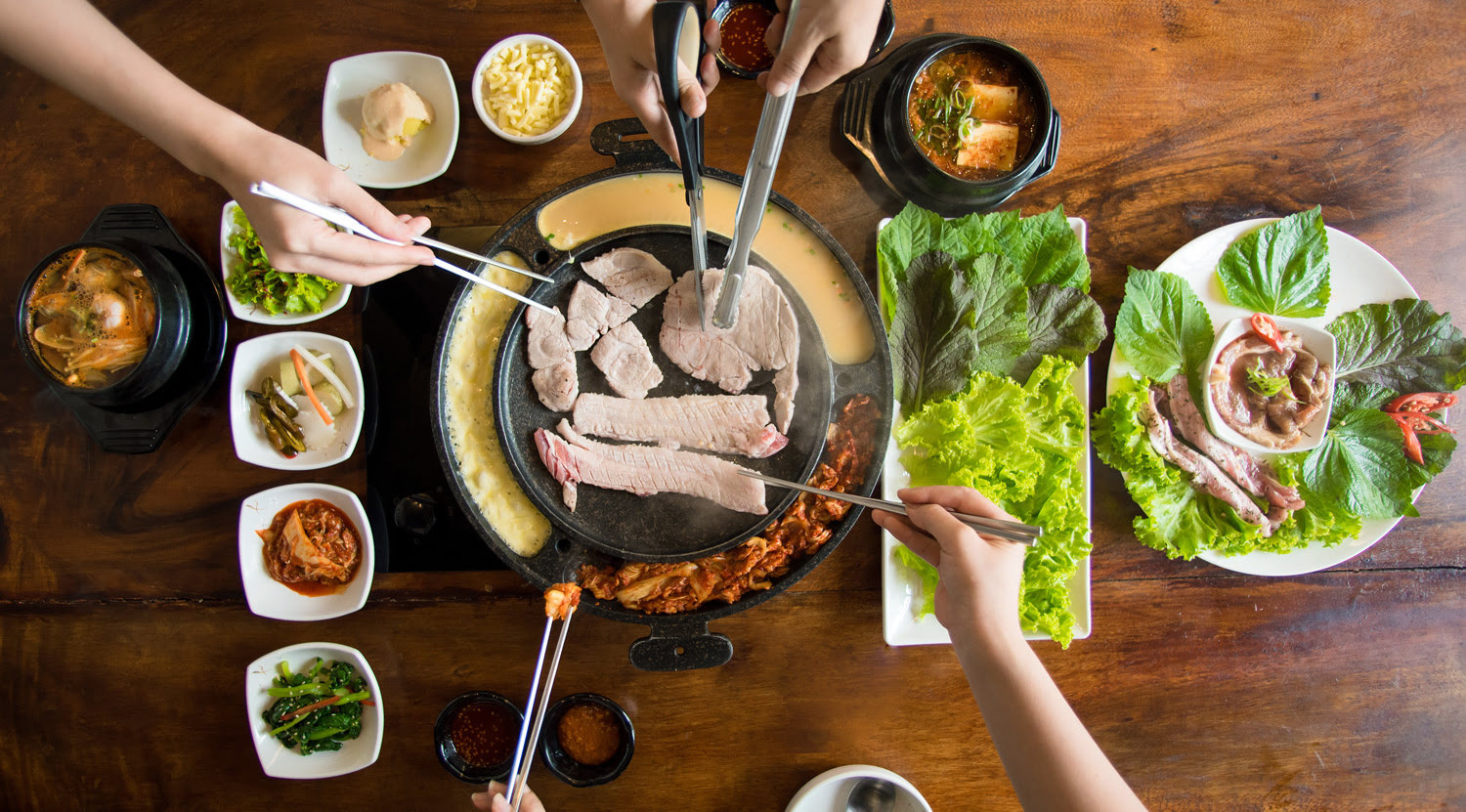

Articles
How To Do Korean BBQ
Modified: August 25, 2024
Learn how to do Korean BBQ with our informative articles. Discover tips, tricks, and recipes to create a delicious and authentic dining experience at home.
(Many of the links in this article redirect to a specific reviewed product. Your purchase of these products through affiliate links helps to generate commission for Storables.com, at no extra cost. Learn more)
Introduction
In recent years, Korean BBQ has gained immense popularity all around the world. With its sizzling grills, mouthwatering aromas, and vibrant flavors, it has become a favorite dining experience for many. Whether you”re a carnivore at heart or simply enjoy trying new culinary delights, Korean BBQ is a must-try for food enthusiasts. But what exactly is Korean BBQ, and how can you make the most of this unique dining experience?
Korean BBQ, also known as “Gogigui,” is a traditional Korean method of grilling meat. It originated in ancient Korea and has evolved over time into the beloved dining experience it is today. The main feature of Korean BBQ is the table-top grill, where diners can cook a variety of meats right at the table.
What sets Korean BBQ apart is the focus on high-quality, thinly sliced meats that are cooked to perfection. It”s not just about grilling meat; it”s about the art of grilling and the social aspect of dining together. Korean BBQ is a communal experience where friends and family gather around the grill, cook their own meat, and share delicious food and laughter.
Now that we”ve piqued your interest in Korean BBQ, let”s delve deeper into this culinary adventure. In this article, we will guide you through the steps of finding the right Korean BBQ restaurant, choosing the meats, preparing the marinade, setting up the grill, cooking the meats to perfection, and enjoying the delicious side dishes and condiments that complete the Korean BBQ experience. We”ll also provide some tips and tricks to ensure your Korean BBQ adventure is a memorable one.
Are you ready to embark on a flavorful journey? Grab your apron and let”s dive into the world of Korean BBQ!
Key Takeaways:
- Experience the joy of grilling and savor the vibrant flavors of Korean BBQ, a communal dining adventure that celebrates food, culture, and togetherness, creating lasting memories with loved ones.
- Elevate your Korean BBQ feast with tips and tricks, from experimenting with marinades to embracing the smoky flavors, and engaging in lively conversations, ensuring an unforgettable dining experience.
Read more: How Much Is Korean BBQ
What is Korean BBQ?
Korean BBQ is a unique dining experience that combines the joy of grilling meat with the rich flavors of Korean cuisine. At its core, Korean BBQ revolves around cooking various cuts of meat on a table-top grill. It’s not just about the delicious food; it’s a social and interactive dining experience that brings people together.
The star of any Korean BBQ meal is the meat. Beef, pork, and chicken are the most commonly used meats, and they are typically thinly sliced to ensure quick and even cooking. The meat is marinated in a flavorful mixture of soy sauce, garlic, sesame oil, and other spices to enhance its taste.
Once you’re seated at a table equipped with a grill, the real fun begins. You can choose from a selection of meats and grill them to your desired level of doneness right in front of you. As the meat sizzles and releases its mouthwatering aroma, you’ll feel your appetite grow.
Accompanying the grilled meat are a variety of side dishes, called “banchan.” These can include kimchi (fermented vegetables), pickled radish, spicy cucumber salad, and bean sprouts, among others. The banchan add a refreshing and flavorful element to the meal, complementing the rich and savory flavors of the grilled meat.
Korean BBQ is not just about eating; it’s about the overall experience. The grill becomes the center of attention as friends and family gather around, sharing stories, laughter, and delicious food. It’s a communal and interactive dining experience that fosters social connection and creates lasting memories.
One aspect of Korean BBQ that shouldn’t be overlooked is the dipping sauces. Each restaurant may have its own unique sauces, but the most common ones include ssamjang, a spicy soybean paste; gochujang, a sweet and spicy red chili paste; and sesame oil with salt or pepper. These sauces add an extra layer of flavor to the grilled meat and can be customized according to personal taste preferences.
Whether you’re a meat lover, a food adventurer, or simply looking to try something new, Korean BBQ offers a delicious and unforgettable dining experience. It’s a feast for the senses that combines the pleasure of grilling with the bold and vibrant flavors of Korean cuisine.
In the next sections of this article, we’ll guide you through the process of finding the right Korean BBQ restaurant, choosing the meats, preparing the marinade, and cooking the meats to perfection. So, let’s get ready to embark on a flavorful journey!
Finding the Right Korean BBQ Restaurant
When it comes to Korean BBQ, finding the right restaurant can make or break your dining experience. With so many options available, it’s important to consider a few factors to ensure you have an authentic and enjoyable meal. Here are some tips for finding the right Korean BBQ restaurant:
- Research and Read Reviews: Start by doing some research online and reading reviews from other diners. Look for restaurants that consistently receive positive reviews for their food and service. Pay attention to comments about the quality of the meat, the variety of menu options, and the overall dining experience.
- Ask for Recommendations: Reach out to friends, family, or colleagues who have tried Korean BBQ and ask for their recommendations. Personal recommendations can be a great way to discover hidden gems and ensure an authentic experience.
- Consider the Atmosphere: Korean BBQ is not just about the food; it’s also about the ambiance and experience. Pay attention to the atmosphere of the restaurant. Is it lively and bustling, or more intimate and cozy? Choose a restaurant that fits your preferences and the occasion.
- Look for Authenticity: One of the key elements of a great Korean BBQ experience is authenticity. Look for restaurants that are known for serving authentic Korean cuisine. This can be determined by the presence of Korean staff, Korean-language menu options, or even Korean patrons dining at the restaurant.
- Check the Quality of Meat: The quality of the meat is a crucial factor in Korean BBQ. Look for restaurants that offer high-quality cuts of meat, preferably sourced from reputable suppliers. Fresh, tender, and well-marbled meat will greatly enhance your dining experience.
- Consider the Prices: Korean BBQ can range from affordable to upscale dining. Set a budget and look for restaurants that fit within your price range. Keep in mind that higher prices may indicate higher quality or additional services such as premium meat options or a wider variety of banchan.
- Location and Accessibility: Consider the location and accessibility of the restaurant. Is it conveniently located for you and your dining companions? Is there ample parking or easy access to public transportation? These factors can greatly impact the overall convenience of your dining experience.
- Consider Dietary Restrictions: If you or your dining companions have any dietary restrictions or preferences, such as vegetarian or vegan options, make sure to check if the restaurant can accommodate them. While Korean BBQ is primarily focused on meat, many restaurants offer non-meat options or alternative dishes.
By considering these factors, you can increase your chances of finding the right Korean BBQ restaurant that meets your expectations and provides an authentic, delicious, and enjoyable dining experience. Once you’ve found the perfect restaurant, it’s time to move on to the next step: choosing the meats for your Korean BBQ feast!
Choosing the Meats
When it comes to Korean BBQ, the selection of meats is a crucial decision that can greatly impact your dining experience. Here are some tips to help you choose the right meats for your Korean BBQ feast:
- Beef: Beef is a popular choice for Korean BBQ, and there are several cuts to consider. One of the most common cuts is bulgogi, which is thinly sliced marinated beef. It is tender and flavorful, making it a favorite among meat lovers. Another popular beef option is galbi, which consists of beef short ribs. Galbi is slightly more fatty than bulgogi, but it offers a rich and succulent taste.
- Pork: Pork is another staple of Korean BBQ. You can choose from various pork cuts, including samgyeopsal (pork belly), which is widely loved for its fatty and tender texture. If you prefer a leaner cut, you can opt for slices of pork loin or pork shoulder. Pork cuts are often marinated in a similar fashion to beef, with a mixture of soy sauce, garlic, sugar, and other seasonings.
- Chicken: While beef and pork are more commonly associated with Korean BBQ, chicken is also a delicious option. Dak galbi, or marinated chicken, is a popular choice. It is usually marinated in a spicy sauce that gives it a bold and flavorful taste. Chicken thighs or chicken breast can be used for Korean BBQ, and they can be marinated or seasoned to your liking.
- Seafood: Although seafood is not as commonly grilled in Korean BBQ as beef, pork, or chicken, you can still find seafood options in some restaurants. Grilled shrimp or squid can add a unique twist to your Korean BBQ experience. These seafood options are typically marinated in a spicy or savory sauce to enhance their flavors.
- Mix and Match: One of the joys of Korean BBQ is the ability to mix and match different meats. You can create a platter with a variety of meats to cater to everyone’s preferences. This allows you to experience a range of flavors and textures in each bite and adds to the social element of sharing and trying different meats together.
- Consider Your Preferences: Ultimately, the choice of meats boils down to your personal preferences. Do you prefer tender and marinated beef, succulent pork belly, or flavorful chicken? Consider your taste preferences and dietary restrictions when making your selection. Don’t be afraid to ask the restaurant staff for recommendations or guidance on the best cuts of meat they offer.
Remember, Korean BBQ is about the experience of grilling the meat yourself, so choose cuts of meat that are easy to handle and cook to your desired level of doneness. You can also ask the staff to assist you with the grilling process if you’re not familiar with it.
Now that you have chosen your meats, the next step is preparing the marinade. The marinade is a vital component of Korean BBQ as it enhances the flavors and tenderizes the meat. In the next section, we’ll guide you through the process of preparing a delicious marinade for your Korean BBQ feast.
Preparing the Marinade
The marinade is the secret to creating the rich and flavorful taste of Korean BBQ. It adds depth and enhances the natural flavors of the meat. Here’s a simple recipe to prepare a delicious marinade for your Korean BBQ:
Ingredients:
- ¼ cup soy sauce
- 2 tablespoons sesame oil
- 2 tablespoons brown sugar
- 4 cloves garlic, minced
- 1 tablespoon grated ginger
- 1 tablespoon rice wine or mirin
- 1 tablespoon honey
- 1 tablespoon finely chopped green onions
- A pinch of black pepper
Instructions:
- In a mixing bowl, combine the soy sauce, sesame oil, brown sugar, minced garlic, grated ginger, rice wine or mirin, honey, green onions, and black pepper.
- Whisk the ingredients together until the sugar has dissolved, and all the flavors are well combined.
- Taste the marinade and adjust the seasoning according to your preferences. You can add more sugar for sweetness, more soy sauce for a saltier taste, or more ginger for extra spice.
- Place your choice of meats in a shallow dish or a resealable plastic bag.
- Pour the marinade over the meat, ensuring that all surfaces are coated. Massage the marinade into the meat to ensure even coverage.
- Cover the dish or seal the bag and let the meat marinate in the refrigerator for at least 2 hours, but preferably overnight. This will allow the flavors to penetrate the meat and make it tender.
- When you’re ready to grill, remove the meat from the marinade and discard any excess marinade.
That’s it! You now have a flavorful marinade that will elevate the taste of your Korean BBQ meats. The combination of soy sauce, sesame oil, garlic, and other seasonings in the marinade will infuse the meat with a delicious umami flavor and a hint of sweetness.
Remember, the longer you marinate the meat, the more flavorful it will be. Overnight marination is ideal, but even a few hours will make a noticeable difference. If you’re short on time, you can still achieve great results with a shorter marination time.
Now that your meats are marinated to perfection, it’s time to set up the grill and embark on the cooking process. In the next section, we’ll guide you through the steps of setting up the grill and cooking the meats to perfection for an unforgettable Korean BBQ experience.
Read also: 14 Amazing Korean Bbq Indoor Grill for 2025
Marinating the Meats
Marinating the meats is an essential step in preparing for a delicious Korean BBQ feast. Marination not only adds flavor but also helps tenderize the meat, allowing it to become juicy and more enjoyable to eat. Here are some tips for marinating your meats for Korean BBQ:
- Choose Thinly Sliced Meats: For the best results, choose thinly sliced cuts of meat. Thin slices allow the marinade to penetrate the meat more easily, resulting in more flavorful and tender bites. If you’re purchasing pre-sliced meats at the store, look for cuts specifically labeled for Korean BBQ.
- Consider the Type of Meat: Different types of meat require different marinating times. Pork and chicken generally require less time to marinate compared to beef, which benefits from a longer marination period for optimal flavor. Adjust the marinating time accordingly depending on the type of meat you’re using.
- Use an Airtight Container or Ziplock Bag: Place the meat in an airtight container or a ziplock bag for marination. This ensures that the marinade is in constant contact with the meat and prevents any leakage or exposure to air, which can affect the flavors. The container or bag should be large enough to hold the meat without overcrowding.
- Coat the Meat Evenly: Pour the marinade over the meat, making sure to coat it evenly. Massage and rub the marinade into the meat, ensuring that each piece is well coated. This helps the flavors to penetrate the meat and results in a more uniform taste.
- Refrigerate for the Appropriate Time: Seal the container or bag and place it in the refrigerator for the recommended marinating time. The time can vary depending on the recipe and personal preference, but marinating for at least 2 hours is recommended. For more intense flavors, marinate overnight.
- Turn the Meat Occasionally: While marinating, it’s beneficial to turn the meat occasionally to distribute the marinade evenly. This helps ensure that each side of the meat receives an equal amount of flavor. If using a bag, gently massage the bag to redistribute the marinade.
- Avoid Over-Marinating: While marinating is essential, over-marinating can lead to a mushy texture and overpowering flavors. Follow the recommended marinating times and avoid marinating for excessively long periods. If you’re unsure, it’s best to consult a recipe or follow the guidelines provided by the marinade you’re using.
- Remove Excess Marinade Before Cooking: Before grilling the meat, remove any excess marinade from the surface. This prevents the marinade from burning on the grill and reduces the risk of excessive smoke or flare-ups. However, do not discard all the marinade, as it can be used as a dipping sauce for the cooked meat or brushed onto the meat during grilling for added flavor.
Proper marination is key to achieving tender, flavorful Korean BBQ meats. Take the time to marinate your meats and allow the flavors to develop. The anticipation of the delicious flavors and aromas will make the cooking process even more enjoyable!
Now that you have marinated your meats to perfection, it’s time to move on to the next step: setting up the grill. In the following section, we’ll guide you through the process of setting up the grill and creating a warm and inviting atmosphere for your Korean BBQ experience.
Setting up the Grill
Setting up the grill is an important step in preparing for a Korean BBQ feast. It’s where the magic happens as you transform your marinated meats into sizzling, flavorful delights. Here’s a guide to help you set up the grill for your Korean BBQ experience:
- Choose the Right Grill: There are various types of grills you can use for Korean BBQ. The most common options are a charcoal grill, a gas grill, or an electric grill. Each has its own advantages and considerations, so choose the one that suits your needs and is safest for your cooking environment.
- Ensure Proper Ventilation: Korean BBQ can produce smoke, so it’s important to ensure proper ventilation in your grilling area. If you’re using an indoor grill, make sure there’s a range hood or exhaust fan to remove the smoke. If you’re using an outdoor grill, make sure it’s placed in an open area with good airflow.
- Preheat the Grill: Before placing the meats on the grill, preheat it to the desired temperature. This helps to ensure even cooking and prevent sticking. Follow the instructions specific to your grill type to achieve the appropriate temperature.
- Prepare the Grill Surface: Clean the grill surface thoroughly and oil it lightly to prevent sticking. You can use a brush or tongs with an oiled cloth to oil the grill grates. This step also helps to create beautiful grill marks on your meats.
- Arrange the Coals: If you’re using a charcoal grill, arrange the coals evenly on one side of the grill. This allows for a two-zone cooking setup, with one side providing direct high heat for searing and the other side for indirect heat to continue cooking the meat.
- Adjust the Heat: If you’re using a gas grill, adjust the heat settings according to the type of meat you’re cooking. Some meats, like beef, require high heat for searing, while others, like chicken, may require less intense heat to prevent drying out.
- Maintain a Safe Cooking Area: Ensure that your grilling area is safe and clear of any flammable items. Keep a fire extinguisher nearby as a precaution and have a safe workspace to handle the hot grill and utensils.
- Prepare Utensils and Tools: Gather the necessary utensils and tools, such as long-handled tongs, spatulas, and heat-resistant gloves. These will allow you to handle the meat safely and efficiently while grilling.
- Organize the Meat: Take your marinated meats out of the refrigerator and organize them on a tray or plate. This makes it easier to transfer the meat to the grill and ensures that you don’t forget any varieties.
- Additional Grill Setup: Depending on your personal preferences, you can add grill accessories like a grill cover to control heat and smoke, or grill baskets for delicate or small food items like vegetables or seafood.
With your grill properly set up and ready to go, you’re one step closer to savoring the delicious flavors of Korean BBQ. In the next section, we’ll guide you through the process of cooking the meats to perfection, ensuring a mouthwatering meal for you and your companions.
Marinate your meat for at least 30 minutes before grilling to enhance the flavor. Use a mix of soy sauce, sugar, garlic, and sesame oil for a traditional Korean BBQ taste.
Cooking the Meats
Now that you have your grill set up and ready, it’s time to begin the exciting step of cooking the meats for your Korean BBQ feast. Proper cooking techniques and timing are essential to achieving succulent, flavorful meats. Here’s a guide to help you cook the meats to perfection:
- Preheat the Grill: Ensure your grill is preheated to the desired temperature before placing the meat on the grates. This allows for even cooking and reduces the risk of sticking.
- Place the Meat on the Grill: Carefully place the marinated meat on the grill, using long-handled tongs or spatulas. Make sure to leave space between each piece to promote proper air circulation and even cooking.
- Monitor the Cooking Time: Keep a close eye on the meats as they cook. The cooking time will vary depending on the thickness of the meat slices and the desired level of doneness. Flip the meat periodically to ensure even cooking on both sides.
- Sear the Meats: For optimal flavor and texture, start by searing the meats over high heat to lock in the juices. This creates a delicious caramelized crust on the exterior while keeping the meat tender and succulent inside. Rotate the meat and sear each side until you achieve the desired charred marks.
- Adjust the Heat: After searing, move the meats to a cooler part of the grill or reduce the heat to continue cooking them. This allows the internal temperature to rise gradually without burning the exterior. This step is particularly important for thicker cuts of meat to ensure they cook all the way through.
- Check the Doneness: To check the doneness of the meat, you can use a meat thermometer for accurate results. The internal temperature will vary depending on the type of meat. For example, beef should reach an internal temperature of around 145°F (63°C) for medium-rare, while chicken should reach a minimum internal temperature of 165°F (74°C) to ensure it’s fully cooked.
- Slice and Serve: Once the meat is cooked to your desired doneness, transfer it to a clean plate or cutting board. Allow the meat to rest for a few minutes to retain its juices. Thinly slice the meat against the grain to ensure tenderness and serve it while it’s still hot.
- Repeat the Process: Continue cooking the remaining meats, following the same process of searing and adjusting the heat as needed. This allows you to enjoy a variety of meats throughout your Korean BBQ experience.
Remember, each type of meat may require a slightly different cooking time and temperature. Some meats might cook quickly, while others may take a bit longer. Pay attention to the thickness and texture of the meat, and adjust the cooking time accordingly to avoid undercooking or overcooking.
As you cook the meats, you’ll be greeted with irresistible aromas and sizzling sounds. Enjoy the process, but also be mindful of food safety. Ensure the meats are cooked thoroughly, and maintain good hygiene by using separate utensils and cutting boards for raw and cooked meats.
Now that your meats are beautifully cooked, it’s time to move on to another essential aspect of Korean BBQ—the side dishes and condiments. In the upcoming section, we’ll explore the delectable options that accompany Korean BBQ and enhance the overall dining experience.
Side Dishes and Condiments
No Korean BBQ spread is complete without an array of vibrant and flavorful side dishes, known as “banchan,” and a selection of delicious condiments. These accompaniments serve to enhance the overall dining experience, providing a balance of flavors and textures. Here are some common side dishes and condiments found in Korean BBQ:
Read more: How Long To BBQ Hamburgers
Side Dishes (Banchan):
Kimchi: Kimchi is a staple in Korean cuisine and an integral part of the Korean BBQ experience. It is a fermented side dish made with vegetables, typically cabbage or radish, and flavored with a mixture of spices, garlic, ginger, and chili pepper. Kimchi adds a tangy, spicy, and slightly sour element to the meal, providing a refreshing contrast to the rich and savory flavors of the grilled meat.
Pickled Vegetables: Alongside kimchi, you’ll often find an assortment of pickled or marinated vegetables, such as pickled radish (danmuji) and pickled cucumber (oi sobagi). These crunchy and tangy side dishes offer a refreshing and palate-cleansing element to the meal.
Bean Sprouts: Bean sprouts are blanched and lightly seasoned, resulting in a crisp and refreshing side dish. They provide a subtle crunch and mild flavor that complements the bold flavors of the grilled meats.
Spinach: Blanched spinach, known as sigeumchi namul, is a popular side dish in Korean cuisine. The spinach is lightly seasoned with sesame oil, soy sauce, garlic, and sesame seeds, imparting a nutty and savory taste.
Seaweed Salad: Seaweed salad, or miyeok muchim, is a cold side dish made with seasoned seaweed. It has a slightly salty and briny flavor, adding a unique taste and texture to the meal.
Condiments:
Ssamjang: Ssamjang is a thick, savory paste made from fermented soybean paste (doenjang), chili paste (gochujang), sesame oil, garlic, and other seasonings. It is a versatile condiment that can be spread on lettuce leaves and filled with grilled meat, adding a spicy and umami-packed flavor to each bite.
Gochujang: Gochujang is a spicy red chili paste commonly used in Korean cuisine. It adds a fiery kick to the meal and can be used as a dip or as a sauce to coat the grilled meat. Its sweet and savory notes balance out the smoky flavors.
Sesame Oil with Salt or Pepper: Sesame oil mixed with salt or pepper is a simple condiment that enhances the natural flavors of the grilled meat. It adds a rich and nutty taste when drizzled over the meat before eating.
Soy Sauce: Soy sauce is a staple in Korean cuisine and can be used as a dipping sauce for the grilled meat. It adds a salty and savory element to the meal.
These side dishes and condiments provide a delightful accompaniment to the star of the show—the grilled meats. They not only add depth of flavor but also offer a refreshing and balanced experience to your Korean BBQ feast. Feel free to mix and match the different side dishes and condiments to create your preferred combination.
Now that you’re familiar with the side dishes and condiments, let’s move on to enjoying the fruits of your grilling labor. In the next section, we’ll guide you through the art of eating Korean BBQ and offer some tips to enhance your overall dining experience.
Eating Korean BBQ
The moment has finally arrived – it’s time to indulge in the flavors of your perfectly grilled meats and vibrant side dishes. Eating Korean BBQ is not just about satisfying your hunger; it’s an experience that combines delicious food, social bonding, and the joy of cooking. Here are some tips to make the most of your Korean BBQ dining experience:
- Wrap and Roll: One of the classic ways to enjoy Korean BBQ is by wrapping the grilled meat in lettuce leaves. Take a lettuce leaf and add a piece of grilled meat, along with some side dishes and condiments of your choice. Roll it up, creating a delicious bundle of flavors and textures. The combination of savory meat, crisp vegetables, and tangy condiments creates a harmonious explosion of taste in every bite.
- Try Different Combinations: Korean BBQ offers endless possibilities for flavor combinations. Experiment with different combinations of meats, side dishes, and condiments to discover your favorite combinations. Don’t be afraid to mix and match to create unique flavor profiles with every bite.
- Share and Enjoy: Korean BBQ is a communal dining experience meant to be enjoyed with family and friends. Share the joy of grilling and savoring the meats together. Pass around the platters of meats, side dishes, and condiments, and engage in lively conversation while you cook and eat. Embrace the social aspect and create lasting memories with your loved ones.
- Savor the Banchan: Don’t forget to explore the various side dishes on offer. Each banchan has its own distinct flavors and roles in Korean cuisine. Take your time to try each one, and appreciate the balance they bring to the meal. Alternate between bites of grilled meat and side dishes to truly appreciate the diversity of flavors on your plate.
- Enjoy the Grilled Meat on Its Own: While wrapping meat in lettuce leaves is a popular way to enjoy Korean BBQ, don’t forget to relish the grilled meat on its own. Savor the smoky and savory flavors that the grilling process has imparted to the meat. Take a moment to appreciate the tenderness and juiciness that a well-grilled piece of meat offers.
- Take Breaks: Pace yourself during your Korean BBQ feast. Take breaks between bites to chat with your dining companions, sip on refreshing beverages, and let your taste buds reset. Korean BBQ is meant to be an enjoyable and leisurely dining experience, so don’t rush through your meal.
- Try the Soups and Stews: In addition to the grilled meats, Korean BBQ restaurants often offer a variety of soups and stews. These dishes, such as kimchi jjigae or doenjang jjigae, complement the grilled flavors with their rich and comforting tastes. Consider adding a bowl of soup or stew to your meal for a well-rounded dining experience.
- Appreciate the Ritual: Korean BBQ is not just about the food; it’s a cultural experience rich in tradition. Take a moment to appreciate the rituals and customs associated with Korean BBQ. Respect the culinary heritage and immerse yourself in the spirit of the cuisine.
By following these tips, you’ll be able to fully immerse yourself in the experience of eating Korean BBQ. Enjoy the flavors, explore new taste combinations, and relish the shared moments with your dining companions. Korean BBQ is more than just a meal; it’s a celebration of food and the joy of coming together.
Now that you’re equipped with the knowledge to make the most of your Korean BBQ experience, let’s explore some additional tips and tricks in the next section to elevate your grilling skills and ensure a memorable time.
Tips and Tricks for a Great Korean BBQ Experience
To truly elevate your Korean BBQ experience and ensure a memorable time, consider these tips and tricks that will enhance your grilling skills and make your dining experience even more enjoyable:
- Try Different Cuts of Meat: While certain cuts of meat are traditional for Korean BBQ, don’t be afraid to experiment with different cuts and types of meat. Explore options like beef brisket, pork jowl, or marinated chicken thighs to add variety and new flavors to your feast.
- Bring an Empty Stomach: Korean BBQ is a filling and satisfying meal. To fully enjoy the experience, make sure to arrive with an empty stomach. Pace yourself to avoid overeating and savor the flavors as you savor the moment.
- Ask for Assistance: If it’s your first time grilling Korean BBQ, don’t hesitate to ask the restaurant staff for assistance. They’re usually more than happy to guide you through the grilling process and offer tips on how to achieve the best results.
- Experiment with Marinades: While traditional marinades are delicious, don’t be afraid to experiment with your own flavors and combinations. Add your favorite spices, herbs, or even a hint of citrus to create unique and personalized marinades for your meats.
- Keep a Clean Grill: As you cook, make sure to clean the grill grates between each batch of meat. Use a grill brush or ball of aluminum foil to remove any leftover residue. This will prevent any charred bits from affecting the taste of the next batch.
- Grill Vegetables and Seafood: Expand your grilling repertoire by adding vegetables and seafood to your Korean BBQ spread. Grill vegetables like zucchini, mushrooms, or bell peppers to accompany the meats. You can also try grilling shrimp or squid for a delightful seafood twist.
- Pair with Refreshing Beverages: Korean BBQ is often enjoyed with refreshing beverages. Opt for traditional Korean options like soju, a distilled rice liquor, or makgeolli, a lightly sweet rice wine. Non-alcoholic choices like iced green tea or fruit-infused water also pair well with the flavors of Korean BBQ.
- Practice Safety Measures: As you handle the grill and hot utensils, prioritize safety. Use heat-resistant gloves and proper handling techniques to avoid burns. Keep a safe distance from the grill and follow any safety guidelines provided by the restaurant.
- Embrace the Smoky Flavors: The grilling process imparts a distinct smoky flavor to the meats. Embrace the smokiness and enjoy the unique taste profile it adds to your Korean BBQ experience. It’s one of the key elements that make Korean BBQ so beloved.
- Engage in Conversation: While grilling and eating, take the time to engage in lively conversation with your dining companions. Share your experiences, stories, and laughter while creating lasting memories around the grill. Korean BBQ is as much about the food as it is about the connection between people.
With these tips and tricks, you’ll be well-prepared to take your Korean BBQ experience to the next level. Whether it’s trying new cuts of meat, experimenting with flavors, or embracing the communal aspect, each element contributes to a truly unforgettable dining adventure.
As you embark on your Korean BBQ journey, remember to enjoy the process, savor the vibrant flavors, and cherish the shared moments with your loved ones. Korean BBQ is more than just a meal—it’s an immersive and joyful experience that celebrates food, culture, and togetherness.
Now that you’re armed with these valuable insights, go ahead and create a memorable Korean BBQ feast. Grill with confidence, indulge in the flavors, and have an unforgettable dining experience!
Are you ready to dive into the world of Korean BBQ?
Read more: How Much BBQ Meat Per Person
Conclusion
Korean BBQ offers a culinary adventure like no other, combining the thrill of grilling meat with the bold and vibrant flavors of Korean cuisine. From the sizzling grills to the mouthwatering aromas, Korean BBQ is a dining experience that delights the senses and brings people together.
In this article, we explored the essence of Korean BBQ, from understanding what it is to finding the right restaurant, choosing the meats, preparing the marinade, setting up the grill, cooking the meats to perfection, and enjoying the array of side dishes and condiments. We also provided tips and tricks to help you make the most of your Korean BBQ experience.
Throughout your Korean BBQ journey, you’ll experience the joy of grilling your own meat, the explosion of flavors as you wrap and roll, and the social connections formed as you gather around the table with loved ones. You’ll appreciate the textures and tastes of the side dishes and condiments, savoring the balance they bring to the meal. And most importantly, you’ll create lasting memories and moments of shared laughter and enjoyment.
As you embark on your Korean BBQ adventure, remember to be creative, take risks, and have fun. Explore different cuts of meat, experiment with marinades, and try various combinations of side dishes and condiments. Embrace the communal aspect of Korean BBQ, engaging in lively conversations while grilling and eating together.
Whether you’re a seasoned Korean BBQ enthusiast or just beginning your culinary exploration, we hope this article has provided you with valuable insights and inspiration to embark on your own flavorful journey. So grab your apron, gather your friends and family, and let the aromatic flavors of Korean BBQ transport you to a world of gastronomic delight!
What are you waiting for? It’s time to fire up the grill and immerse yourself in the captivating world of Korean BBQ!
Frequently Asked Questions about How To Do Korean BBQ
Was this page helpful?
At Storables.com, we guarantee accurate and reliable information. Our content, validated by Expert Board Contributors, is crafted following stringent Editorial Policies. We're committed to providing you with well-researched, expert-backed insights for all your informational needs.
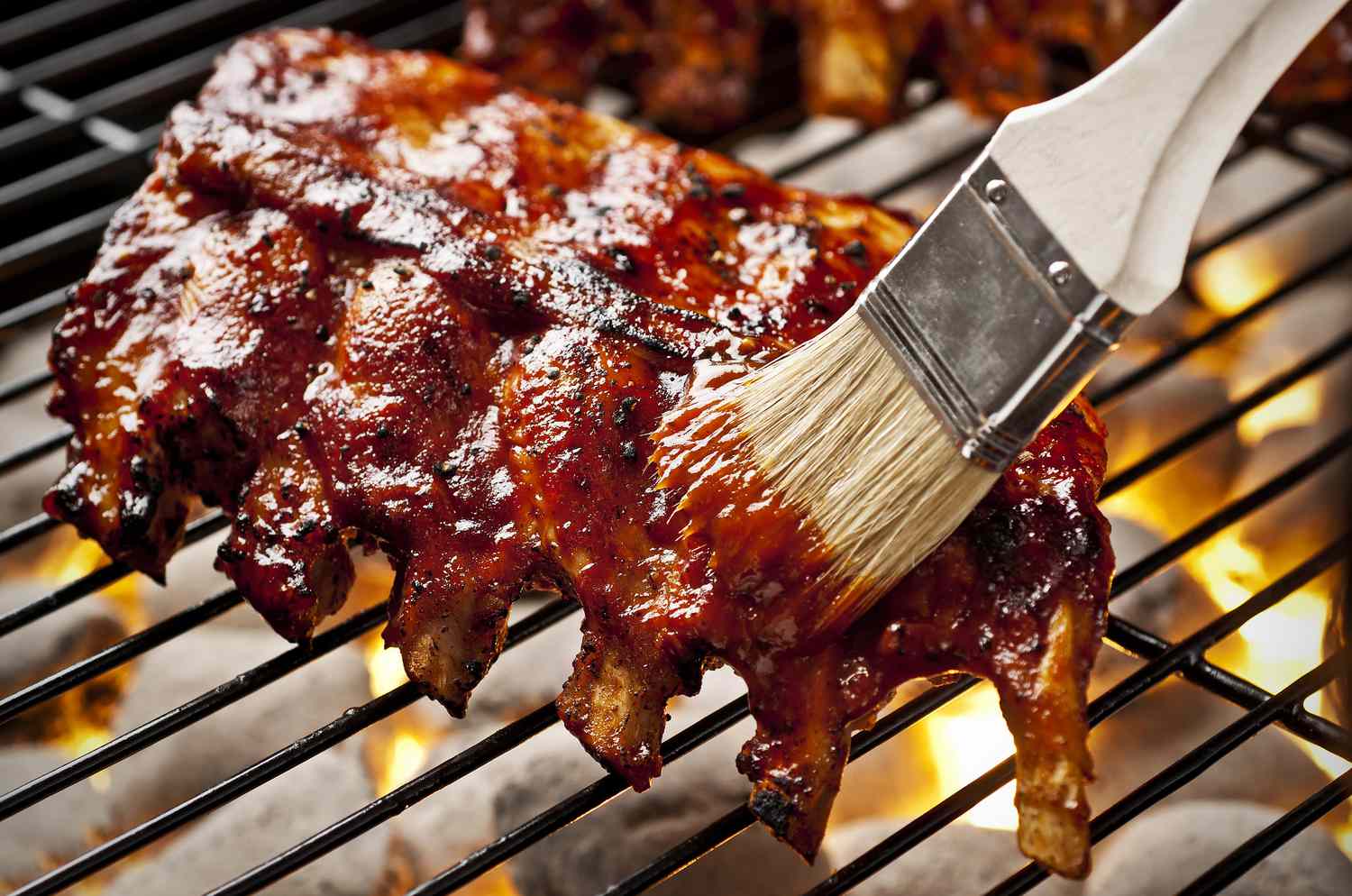
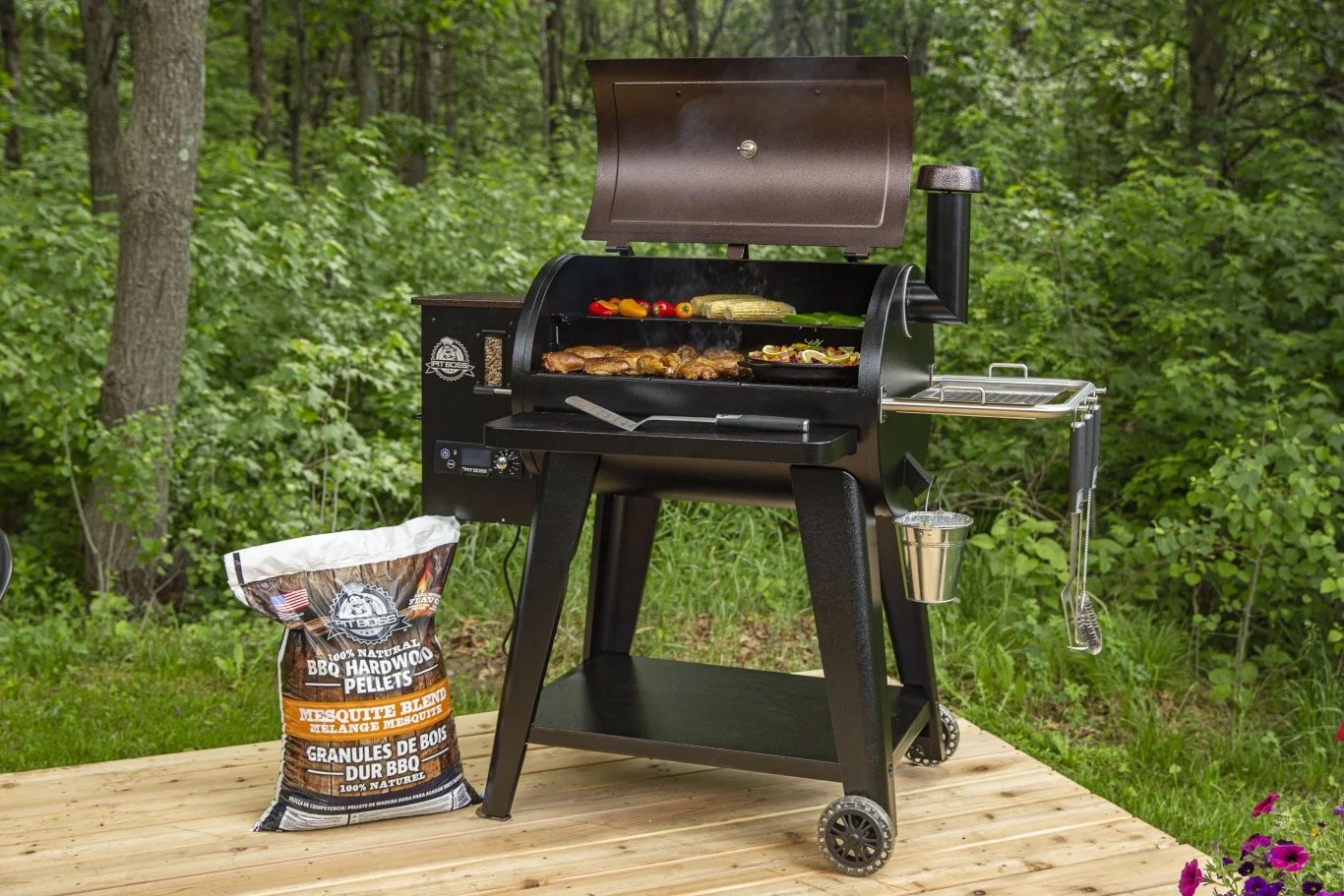


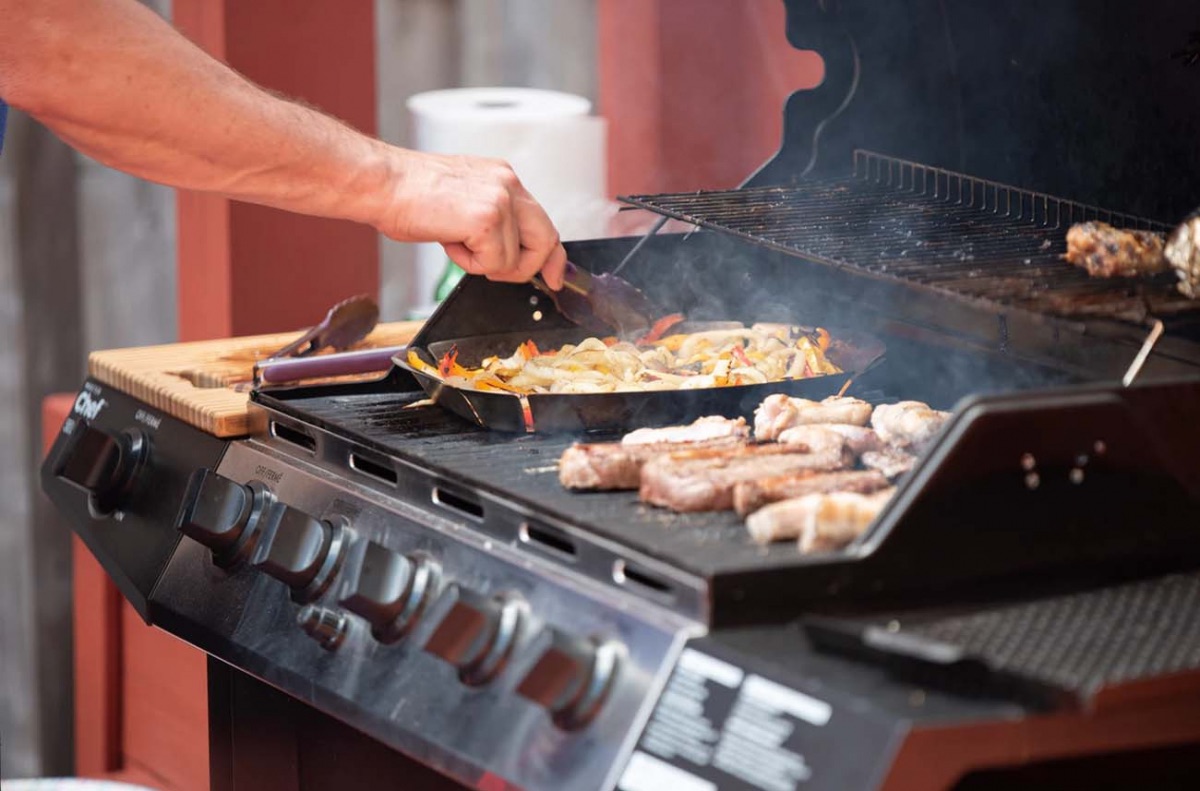
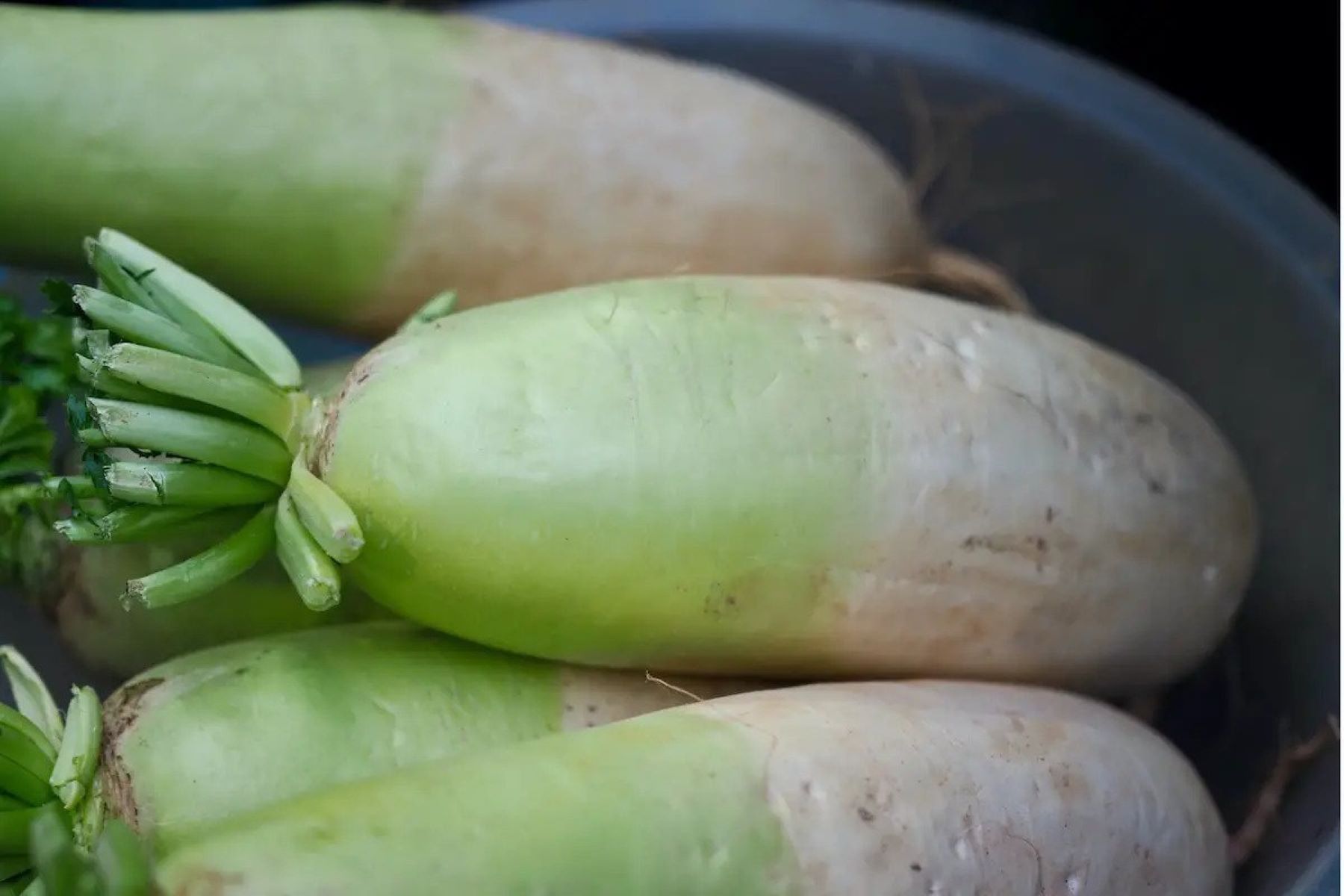


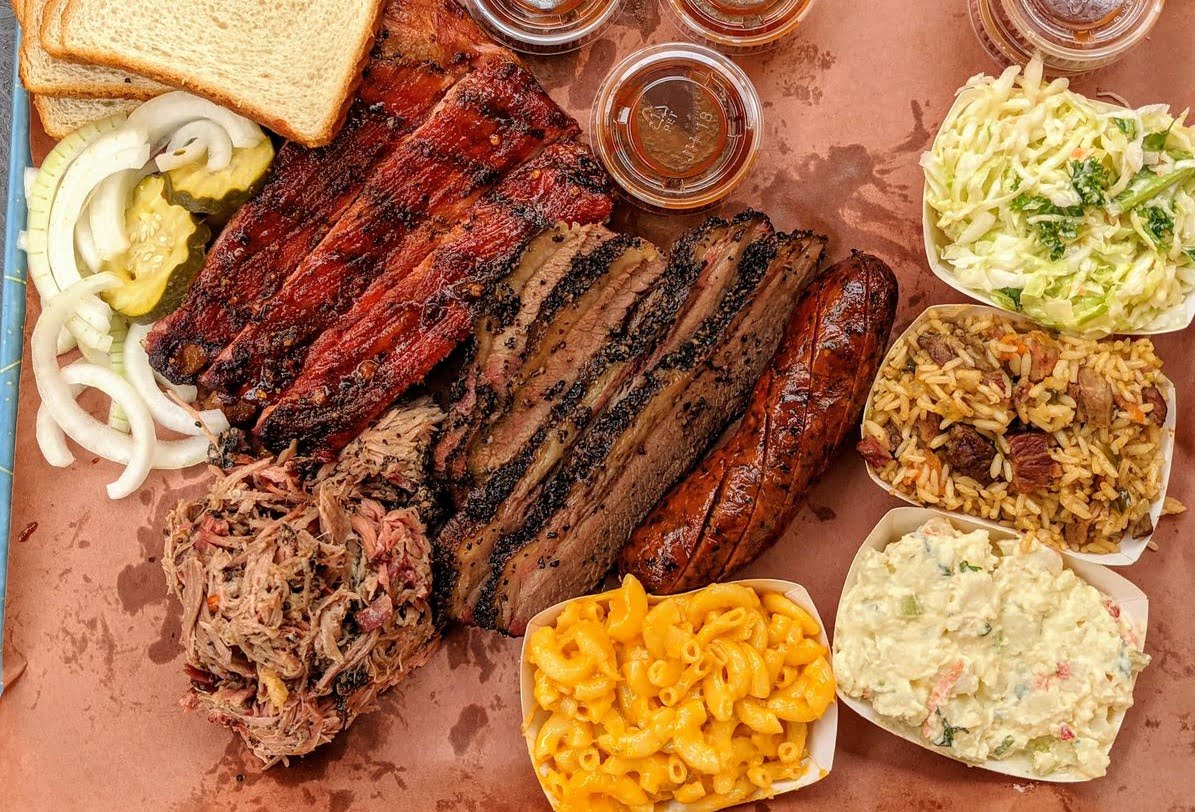
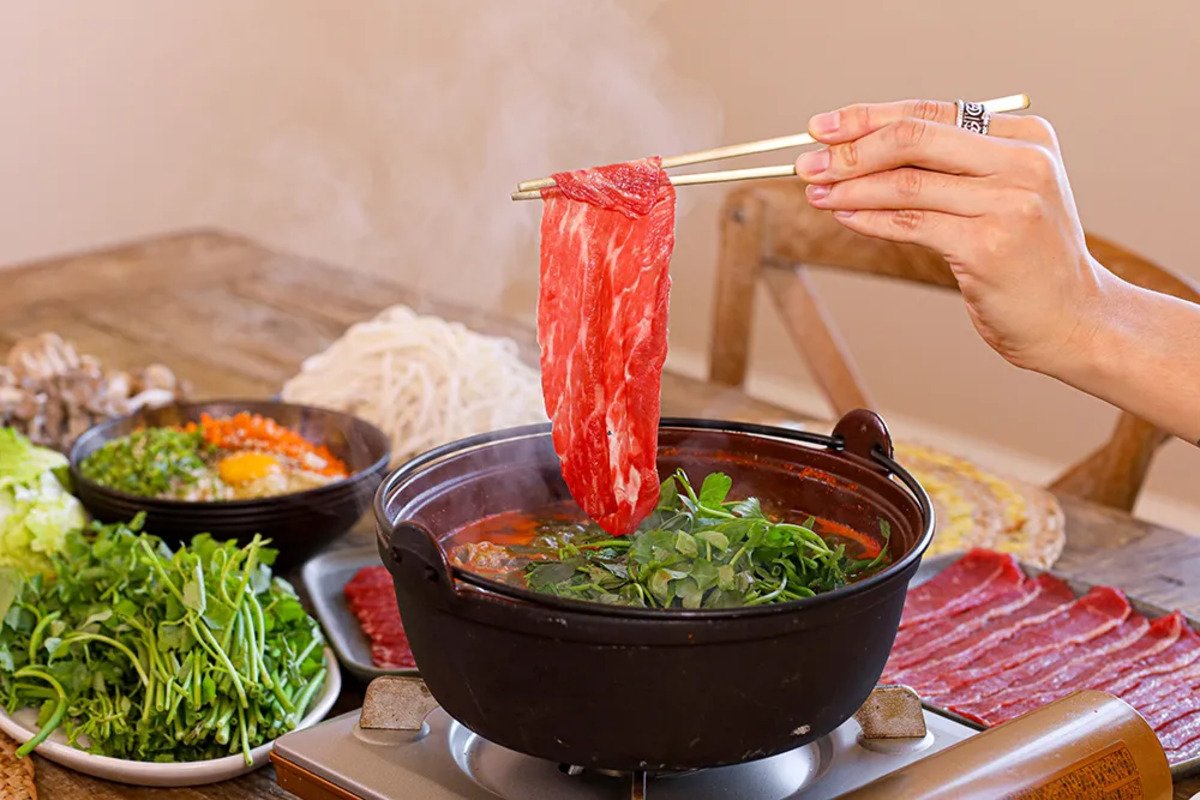
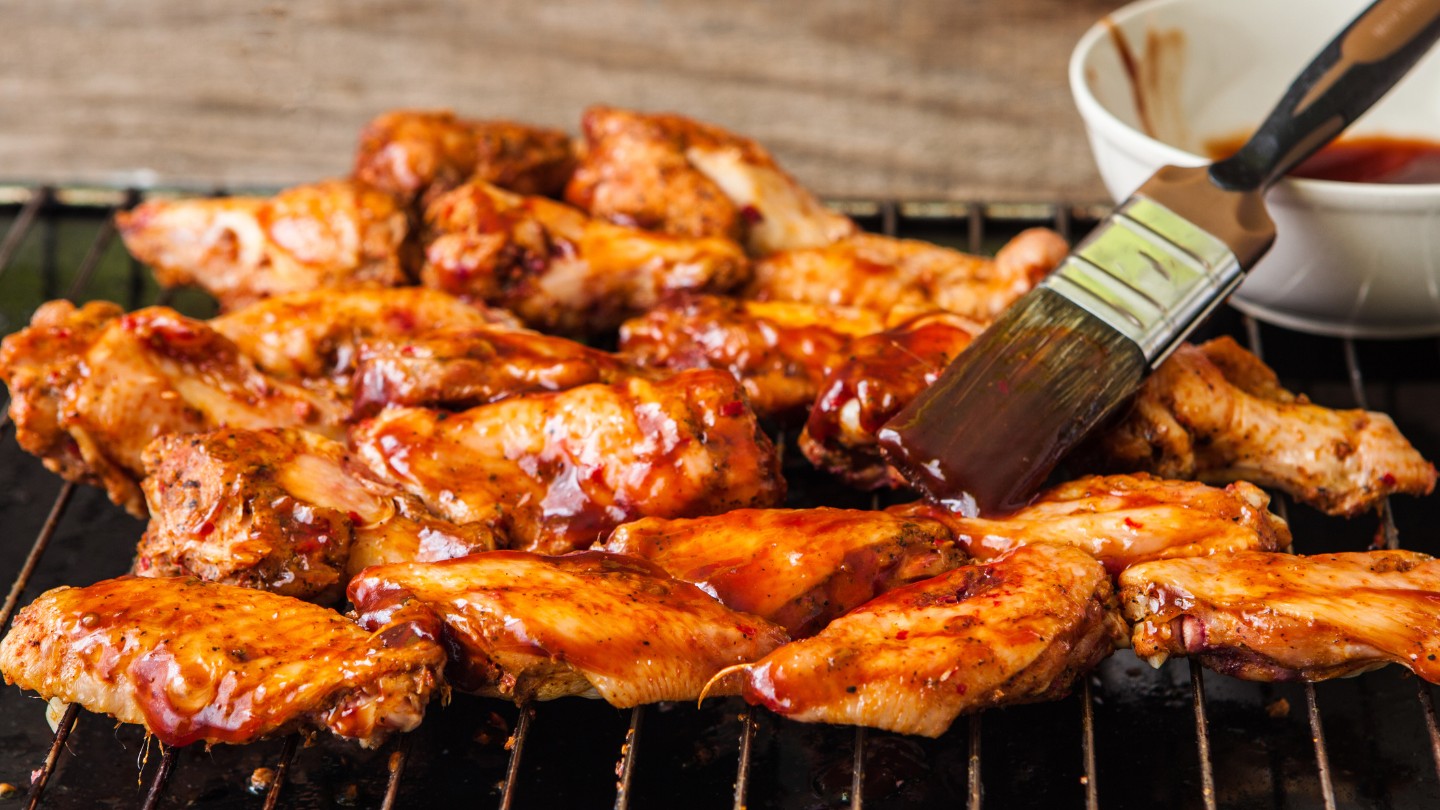


0 thoughts on “How To Do Korean BBQ”